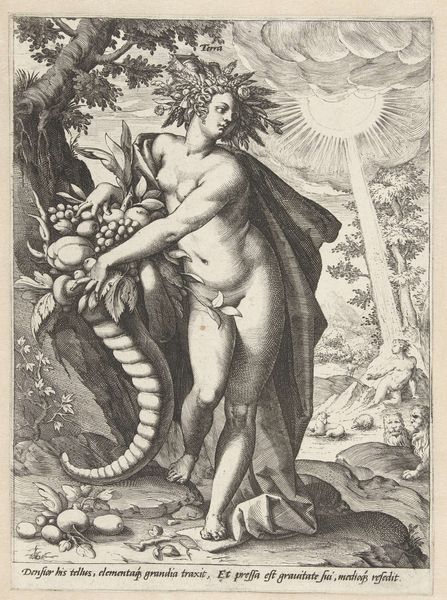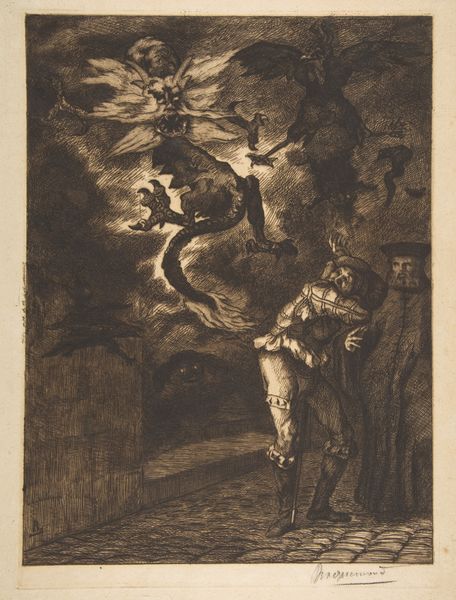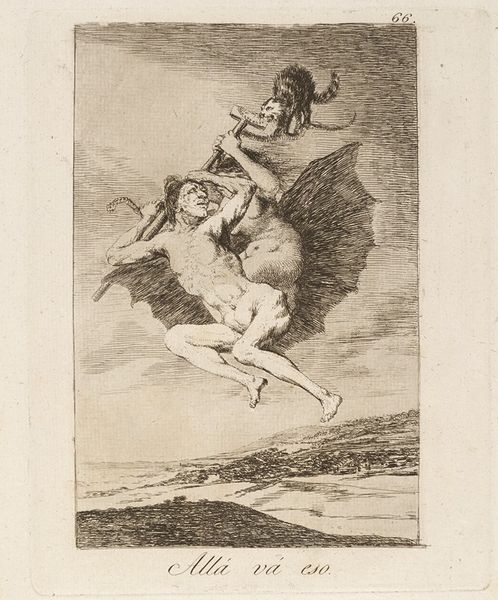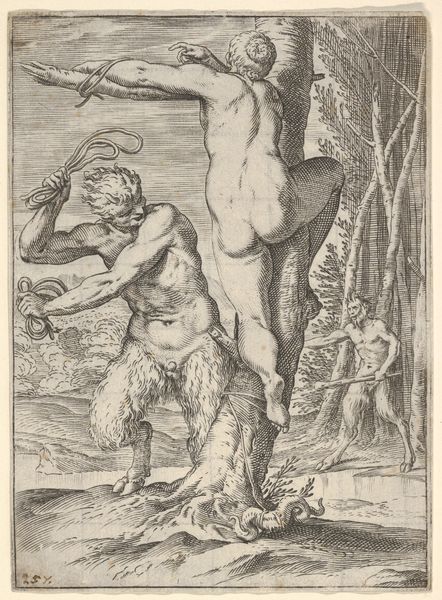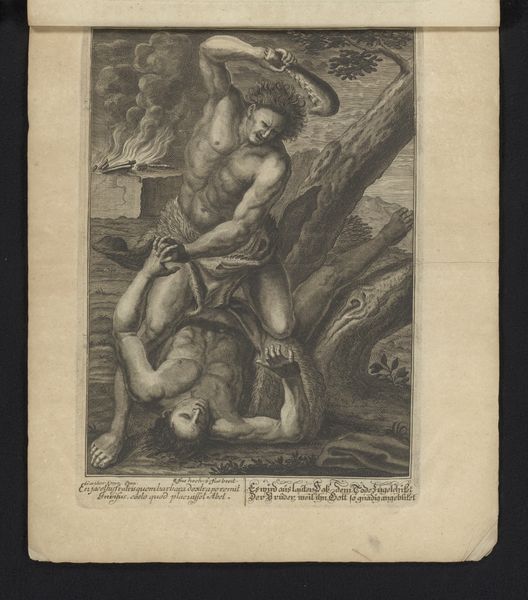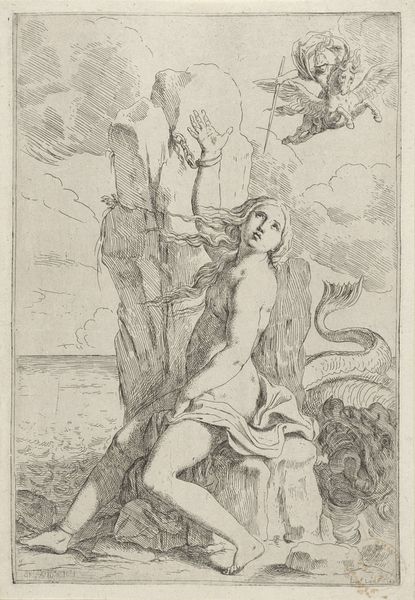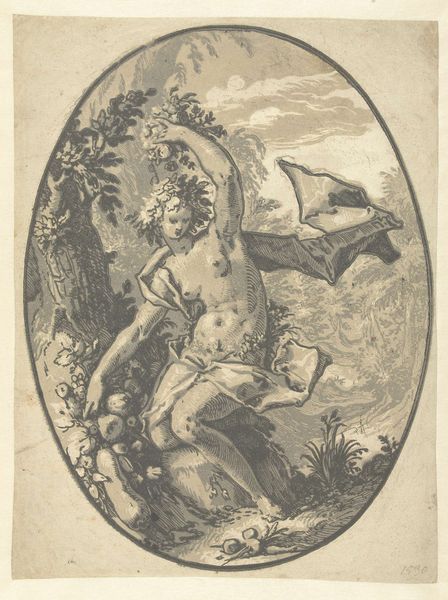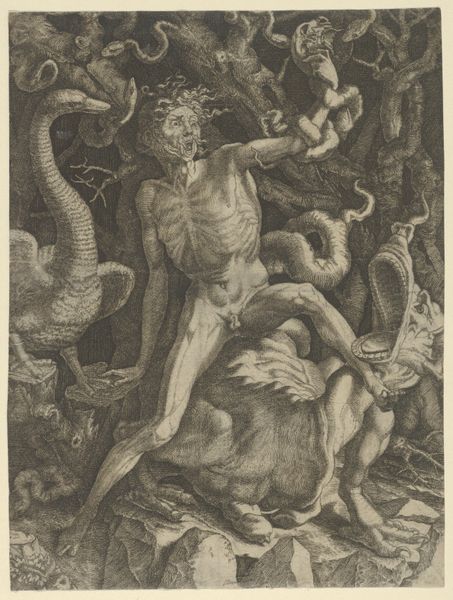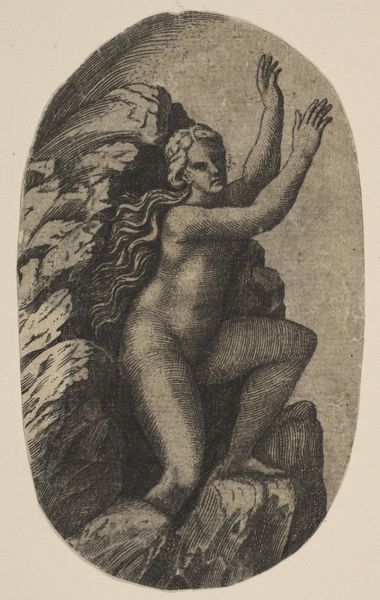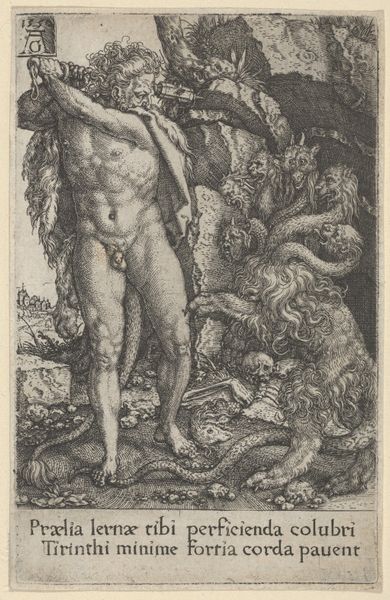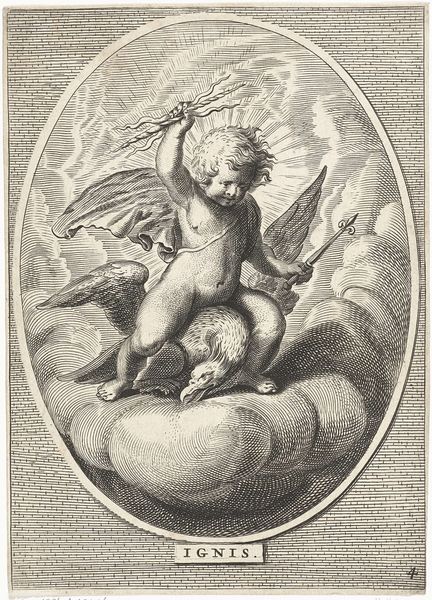
Tornado–Zeus Battling Typhon, from Erasmus Darwin's "The Botanic Garden" 1795
0:00
0:00
drawing, print, engraving
#
drawing
# print
#
landscape
#
charcoal drawing
#
figuration
#
romanticism
#
line
#
history-painting
#
academic-art
#
engraving
Dimensions: image: 8 5/16 x 6 11/16 in. (21.1 x 17 cm) sheet: 9 15/16 x 7 5/16 in. (25.2 x 18.6 cm)
Copyright: Public Domain
Curator: William Blake’s 1795 engraving, “Tornado—Zeus Battling Typhon, from Erasmus Darwin's 'The Botanic Garden',” depicts a rather dramatic confrontation. Editor: Indeed! My first impression is raw, visceral energy. The diagonal lines of the lightning and the spiraling form evoke an almost uncomfortable sense of movement and barely contained violence. Curator: Blake produced this engraving after Henry Fuseli's original design. Consider the role of reproductive printmaking at this time. Engravings like these disseminated knowledge, visualized scientific ideas, and influenced popular imagination. Erasmus Darwin's "Botanic Garden," where this illustration appeared, attempted to popularize scientific thought. The poem celebrated the generative power of nature and envisioned a progressive future driven by technological innovation and natural forces. Editor: Fascinating. But let's not gloss over the actual narrative. We see Zeus, the symbol of order and patriarchal power, battling Typhon, a serpentine, monstrous figure embodying chaos and rebellion. The politics here are hard to ignore. Blake positions these characters in the face of modernity: Typhon’s animality stands as a challenge to the order and industrial progression championed by Darwin and by Zeus. I see in the battle for control the tension between tradition and transformation. Curator: Blake's technique is also striking. Look at the incredible detail achieved through the network of etched lines; he harnesses linear precision to depict turbulence. Think about the material properties of copper plates and the intense labor needed to produce such fine work, then compare them to the intellectual circles it helped reach. Editor: Absolutely, but that technical precision is in the service of a narrative rooted in very material conditions—class conflict, revolution, colonialism. Zeus, in all his godly authority, is, in effect, suppressing an alternative force. Even Darwin’s ideas regarding human progress mask a larger battle: Who gets to progress? At whose expense? Curator: So you’re seeing this more as a political allegory disguised within scientific illustration. It raises questions about how these concepts are themselves created, presented, and consumed, shaping worldviews through widely distributed prints. Editor: Exactly. Blake gives us both Zeus's supposed triumph and Typhon's resistance, making us consider how these narratives serve specific power structures, still visible today. Curator: I see that point. Thank you for reminding us about its far-reaching message. Editor: Thanks. It's a vital piece in a wider discourse, showing art's inherent social purpose, then and now.
Comments
No comments
Be the first to comment and join the conversation on the ultimate creative platform.
